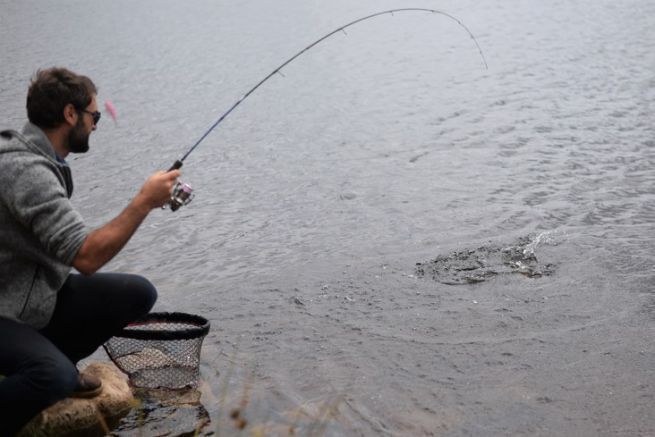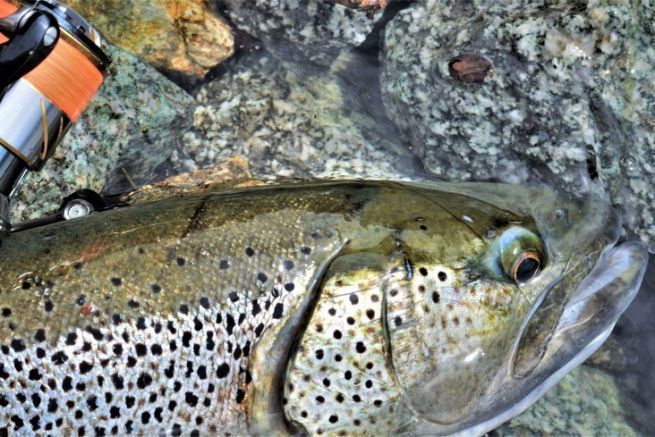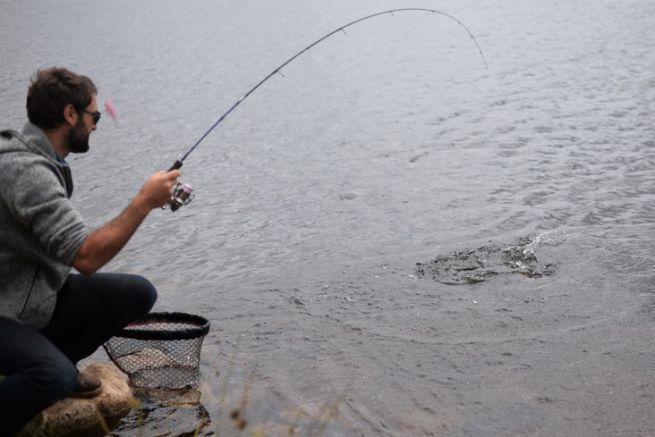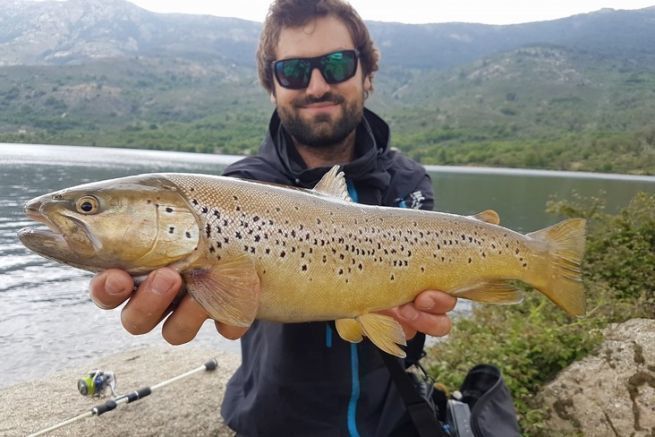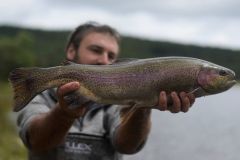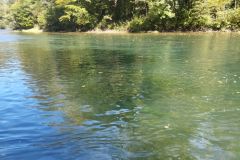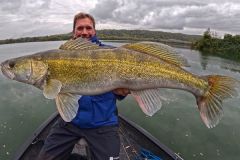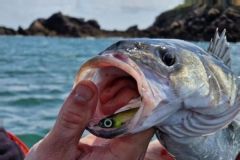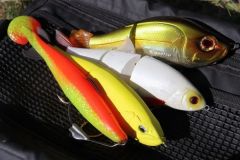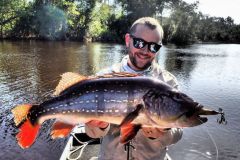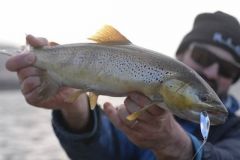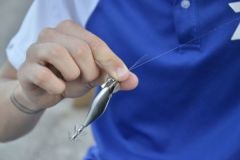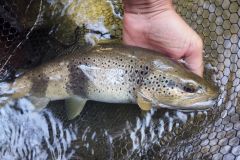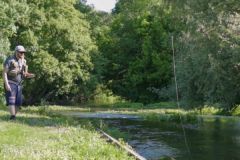Fluorocarbon is very little used in line bodies for trout lures. It is however very useful to make discrete and abrasion resistant leaders.
The properties of flurocarbon
Like nylon, fluorocarbon is a monofilament. The use of fluorocarbon as a line body is very limited for trout. It is sensitive to twisting and splits more easily than nylon, which can cause wigging.
Fluorocarbon does have one interesting property as a line body, however, and that is that it is said to be more sensitive than braid for a semi-tensioned or even relaxed banner. In other words, you can feel the touch while the line is slack. This can be useful for very specific fishing with soft lure or drifting.
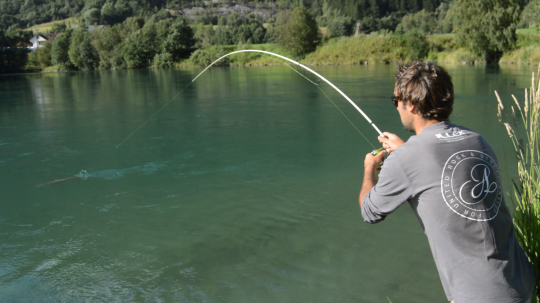
Its relative heaviness will create a belly and a banner management that will remain tedious. I don't recommend it as a line body, except if you use your perch or black-bass combo ready for trout.
Another disadvantage is that it is less resistant than nylon for the same diameter.
Bottom of the line
The use of flurocarbon is on the other hand perfect for the leaders of line. Its high resistance to abrasion and its discretion are ideal to present the lure cleanly.
It will be associated with other bodies of line like nylon if it is colored or with braid.
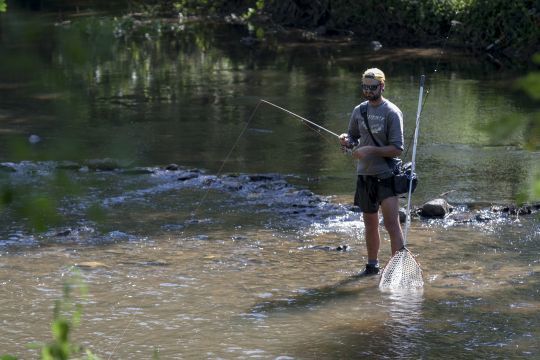
The length will vary according to the clarity of the water, the size or the depth of the fished spots. To tie it to the line body, I use the Peixet knot which is very strong and easy to make.
What diameter?
The diameter of the fluorocarbon at the bottom of the line will generally vary from 12 to 20/100. The finer the diameter used, the better the lure will work and evolve naturally.
In general, the 12 and 14/100 are to be used for sight fishing or in competition on fish calibrated at 30 cm.
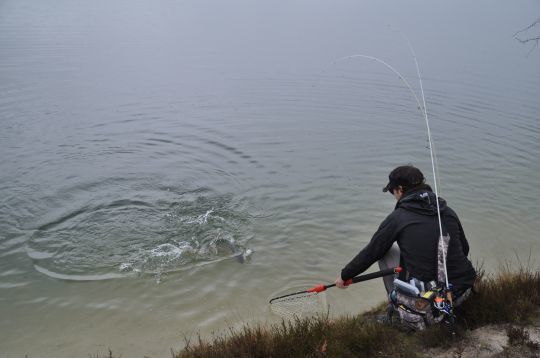
Beyond that, the diameter is adapted to the size of the fish and the stream. Make sure that the resistance of the fluoro is at least 2 lbs (about 1 kilogram) less than the resistance of the line body. In the event of breakage, only a piece of the leader is lost, not a large portion of the line. For example, for an 8-lb (4-kilogram) strength line, you would use a 6-lb (3-kilogram) fluorocarbon leader.

 /
/ 